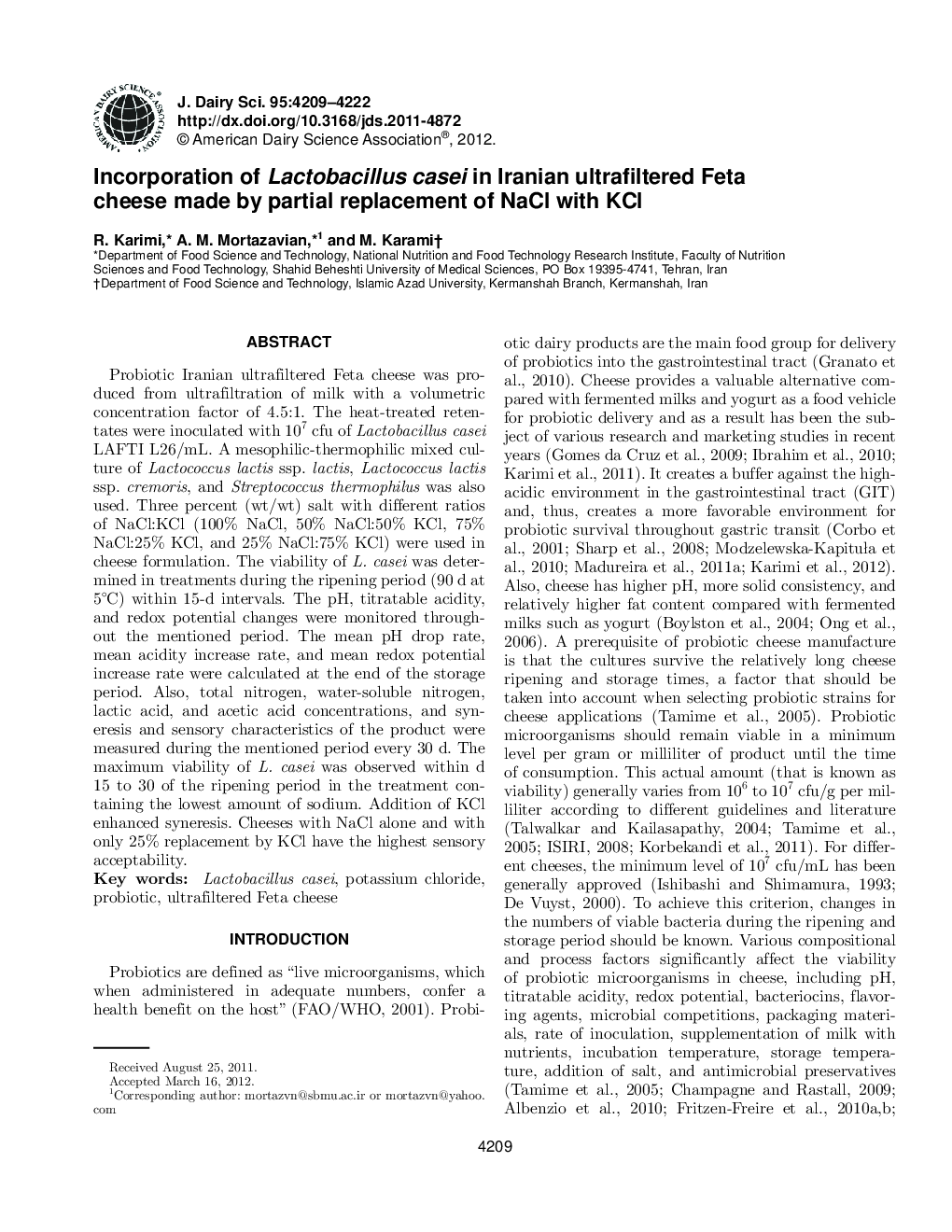| Article ID | Journal | Published Year | Pages | File Type |
|---|---|---|---|---|
| 10978782 | Journal of Dairy Science | 2012 | 14 Pages |
Abstract
Probiotic Iranian ultrafiltered Feta cheese was produced from ultrafiltration of milk with a volumetric concentration factor of 4.5:1. The heat-treated retentates were inoculated with 107 cfu of Lactobacillus casei LAFTI L26/mL. A mesophilic-thermophilic mixed culture of Lactococcus lactis ssp. lactis, Lactococcus lactis ssp. cremoris, and Streptococcus thermophilus was also used. Three percent (wt/wt) salt with different ratios of NaCl:KCl (100% NaCl, 50% NaCl:50% KCl, 75% NaCl:25% KCl, and 25% NaCl:75% KCl) were used in cheese formulation. The viability of L. casei was determined in treatments during the ripening period (90 d at 5°C) within 15-d intervals. The pH, titratable acidity, and redox potential changes were monitored throughout the mentioned period. The mean pH drop rate, mean acidity increase rate, and mean redox potential increase rate were calculated at the end of the storage period. Also, total nitrogen, water-soluble nitrogen, lactic acid, and acetic acid concentrations, and syneresis and sensory characteristics of the product were measured during the mentioned period every 30 d. The maximum viability of L. casei was observed within d 15 to 30 of the ripening period in the treatment containing the lowest amount of sodium. Addition of KCl enhanced syneresis. Cheeses with NaCl alone and with only 25% replacement by KCl have the highest sensory acceptability.
Related Topics
Life Sciences
Agricultural and Biological Sciences
Animal Science and Zoology
Authors
R. Karimi, A.M. Mortazavian, M. Karami,
